Skip ahead
- What is Ecommerce SEO?
- What is an ecommerce SEO audit?
- Why SEO Audits Are So Important for E-commerce Sites
- What Needs to Be on Your E-commerce SEO Audit Checklist
- Ecommerce SEO Audit Checklist in 21 Steps
- Why You Also Need An E-commerce SEO Competitor Audit
- Don’t Delay Starting Your E-commerce SEO Audit!
Is your website overdue for an e-commerce SEO audit? If you’re not getting the results you want from your site, it’s likely that you would benefit from an audit. Building a website doesn’t guarantee that you will get traffic. There are billions of web pages on the Internet. If you don’t take active steps to rank high on Google and other search engines, you’ll find it very difficult to attract organic traffic. That’s where search engine optimization comes in.
However, many online sellers believe they can “set it and forget it” where SEO is concerned. This is far from true. Google’s algorithm and ranking factors are always changing and your e-commerce website needs to keep up. You must consistently evaluate your site and respond promptly to the findings. Otherwise, your perfectly optimized site from 6 months ago could now be lacking in key areas.
What is Ecommerce SEO?
Ecommerce SEO is the process of making sure your ecommerce site is visible to search engines and ranks highly enough for its target keywords. It includes all the methods and strategies which are used to promote commercial sites online.
Ecommerce SEO is differ from SEO for other sites because it involves multipage site promotion and quick-changing content with a limited marketing budget. Online stores need SEO to attract more customers and make profit.
But all these goals can be reached only in the case the site functions properly. That's why a SEO audit is an essential part of ecommerce SEO services.
What is an ecommerce SEO audit?
An ecommerce SEO audit is a total check of all functions of the site. If something works wrong, SEO experts will fix or improve it to make your website’s pages perform well. There are a number of ranking factors that are analyzed and tested to see if they help to boost ranking or prevent an increase of position in search engine result pages. As a result of the audit, you'll get a list of priority flaws that need to be addressed with the right SEO strategy.
An SEO eCommerce audit involves the full analysis of the current web page’s performance and health of your website, and let to:
- Identify SEO problems that have an impact on the performance of your website
- Offer optimization for better performance.
- Increase site performance, visibility and organic traffic.
Why SEO Audits Are So Important for E-commerce Sites
People are shopping online more than ever and there are no signs that online retail is going to slow down. If people aren’t shopping with you, they’re shopping with your competitors.
Carrying out an e-commerce SEO audit will give you a clear picture of where you stand right now. It will help you to identify what you’re doing well and what you need to improve. When you audit your site and take the necessary steps, you can boost your organic traffic, improve your search engine rankings, and increase conversions.

If you want to appear on page 1 of the Google search results and get people to click on your link and follow through with a purchase, your SEO strategy needs to be robust. You can only develop a solid strategy if you carry out an e-commerce site SEO audit on your platform and also analyze the competition’s SEO strategies.
Constant development is the hallmark of e-commerce sites. Such sites regularly update content and categories, update site navigation, add new pages and remove old ones, and optimize interactive elements.
In addition to this, e-commerce sites are characterized by the presence of a complex architecture of URL parameters. This is due to the need to make adjustments to the parameters of the display of goods. If a company has an outlet not only on the local, but also on the global market, it is worth creating separation parameters, so that it is easier to serve the pages of the site.
Working on the optimization of e-commerce sites includes a lot of nuances that should not be overlooked to prevent the appearance of errors. Regular SEO audits will help keep multiple factors in check and take action to correct problems at the right time.
So, are you satisfied with the traffic that search engines are driving to your e-commerce website? If you have concerns about the quality or quantity of the leads you’re getting, you may be tempted to give up. However, what you should really do is perform an e-commerce SEO audit. This will help you to identify the areas of your SEO strategy that you need to improve. If you’re clueless about where to start, the following e-commerce SEO audit checklist is for you.
What Needs to Be on Your E-commerce SEO Audit Checklist
You’ll need to look at on-page SEO, off-page SEO, and technical SEO to get the best results. Let’s discuss how you can audit each type of SEO.
On-Page SEO Audit
On-page SEO refers to improvements made to the content and HTML source code on various pages to rank higher on search engines and get more relevant traffic. You’ll need to go through a series of steps to analyze the most important aspects.

1. Assess How You Use Keywords
Keywords are extremely important since they play a major role in where your website appears in the search engine rankings. If your e-commerce site appears on the first page when users search for relevant keywords, you’ll likely get more website views and more sales. The first step in your e-commerce SEO audit is to make sure you’re using keywords properly.
Google Search Console can help to determine which pages don’t rank well. If you’re not using your main keyword enough, increase the density by adding the word or phrase to both your audience-facing content and your metadata. If you’re already using your main keyword enough, look for other relevant keywords you can incorporate. You can start this process by analyzing the queries that people use to reach your website.
2. Assess Your Meta Descriptions and Title Tags
This is the next important step in your e-commerce SEO audit checklist. Your title tags and meta descriptions are what people see in the search results. You need to make sure they are accurate and that they drive people to click on the link. Analyzing your click-through rate will help you to determine if your tags are pulling people in. However, keep in mind that CTRs vary by industry and if you rank on the second page of the Google search results or lower, your CTR will be lower.
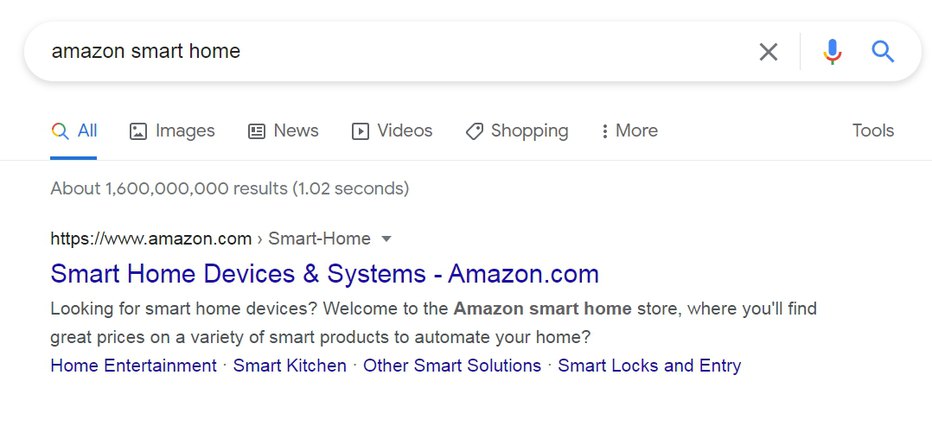
If your CTR is too low, make sure you optimize your meta descriptions and title tags to make them more descriptive and appealing. Remember to include relevant keywords. Meanwhile, if your CTR is high but your conversions are low, it could be that your metadata doesn’t accurately reflect what’s on your pages. People may be drawn in by your title and your description but when they click the link, they realize the product on your e-commerce website isn’t what they were looking for. Consider revising the tags to make them more accurate as you work through the e-commerce SEO audit.
The most common problem with ecommerce sites is duplicate meta-tags. Such sites are characterized by a branched structure of pages on which products of different colors, quality, size and other parameters are presented. But often, different pages may have duplicate titles, making it difficult to find the right page. A SEO audit is used to find duplicate meta tags. It displays duplicate meta-ags to optimize them. To simplify the development of meta-tags for e-commerce sites, you can use an automatic title generator. For example for the online store selling technology Apple fit the following scheme:
Title: Buy Online Product brand | Product model | Product color | Memory capacity | Store name
We get the following title:
Title: Buy Online iPhone 13 Pro Gold 256 GB - Apple Store
During SEO audit, check meta titles and descriptions to fit within the set character limit to ensure that search engines can display them in full. The character limits are:
Meta title: 50-60 characters
Meta description: 160 characters
To check your meta title for compliance with search engine requirements try our title tag preview tool
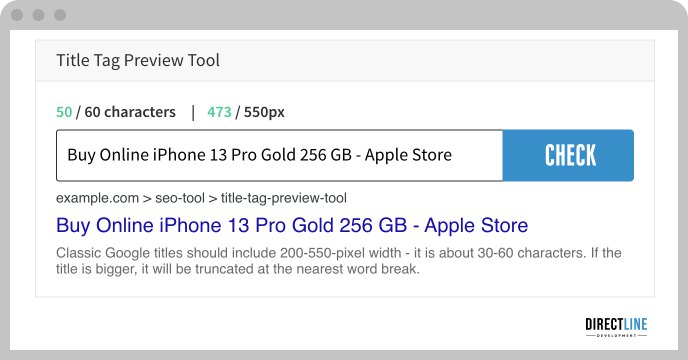
3. Assess Your Content
Keywords aren’t the only thing you need to consider. Content is extremely important so you must take an in-depth look at it as part of your e-commerce SEO audit. People who visit your site want valuable content. Depending on what you sell on your website, that content may need to be inspiring, educational, entertaining, or some combination of these characteristics.
Look at your content and determine whether it meets the needs of your target audience or if there are gaps. Analyze the content your competitors create and compare it to your own. If you need to come up with a new content strategy for your business, make sure you’re covering the topics that your audience wants you to cover.
4. Duplicate content
E-commerce sites suffer from duplication not only of meta tags but also of content. This is due to the fact that similar products are described using the same terms and characteristics.
The initial goal of a technical SEO audit is to find problems and methods of fixing them. Thus, according to the results of the audit it will be clear whether there is a problem with duplicate content using canonical tags, "noindex" tags, robots.txt rules and some other methods. How can you diversify your content? Add FAQ sections, product reviews, shopping guides, and fill pages with unique and interactive elements.
5. Headings
Headings do not affect the ranking of the site, but they give insight to the search engines about the subject matter of the site. Accordingly, the more clearly you define the content, the better the search engines understand what your site is about, and therefore promote it for certain queries they will be more active.
Headings will help to bring structure to your content, to make it more understandable to users. So they can more quickly find out if your site is a source where they will find answers to their questions. Search engines also consider text readability as one of the factors affecting ranking.
Make sure you have a one unique H1 that includes a primary keyword (but be careful, H1 is not the same as the title tag, they should be different). Then write H2s to H6s to separate large pieces of content by meaning.
The SEO Meta In 1 Click extension, you can quickly detect the presence of two H1 tags on a website page. For a more extensive analysis, we recommend using Screaming Frog SEO Spider, where you can check the headers of the entire site at once and make a list of errors and technical tasks for optimization.
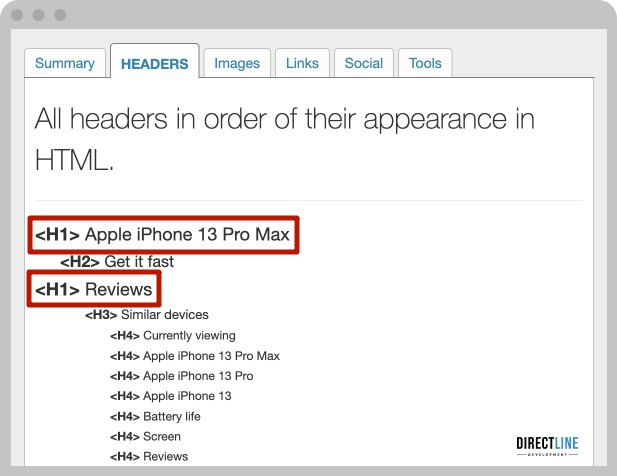
6. Alternative text for Images
Search engine bots cannot read images, which is why including an alt attribute to them is important.
You can also include your target keyword in the alt text if it indeed adds value and describes what the image is about.
As part of your website audit, you need to ensure that all your images have relevant alt texts.

7. Internal linking
We discussed using internal links in the technical SEO section, but there is one more aspect to them that impacts the on-page SEO.
You should be strategic when you’re doing interlinking. Depending on how you link your pages to one another will signal to search engines which one is more important and will rank it higher. So, link your pages to important ones that you want to rank on the first page in SERP. Usually, these are the ones that target high-volume keywords, and that are of an outstanding quality (i.e. your best content).
Also, make sure your anchor text is the exact or partial match of the targeted keyword of the page you want to link to.
Off-Page SEO Audit
After you’ve taken care of your on-page SEO, the next part of your e-commerce site SEO audit deals with off-page SEO. This covers those factors that you can influence but can’t directly change. Your off-page audit will include two things:
1. Evaluating Backlinks
Backlinks are links to your site from another website. When you have high-quality backlinks, you’ll be more likely to rank high in the search results. That’s because links from authoritative sites help to build trust in your e-commerce site. Ahrefs’ backlink checker is a useful tool for checking both your domain and individual pages as you carry out your e-commerce SEO audit.
Not all links are good links so even though you may see a lot of links to your site, you need to make sure they are reputable. Low-authority sites or spammy sites won’t help you to rank high on Google or any search engine. If you discover that you’d rather not have some of the links, reach out to the owners of the sites and ask them to remove the links. To delete the link use the Disavow Links tool from the Google Search Console panel. But be careful. This feature is advanced and should be used with caution. With incorrect use it can cause damage to your site’s performance in Google SERP. Consult a SEO expert before the use.
In order to find referring domains that refer to your site and have a bad domain rating, we use the Site Explorer tool from Ahrefs. Just type in the domain of your site and go to the ‘Referring Domains’ block. That way you will see all the domains referring to your site. Then sort the DR column in ascending order, and you will see the domains with poor referring domains first.

If you find that you’re getting links from high-quality sites, see if you can get even more. If links of any kind are rare, you may need to look into how you promote your content. Contact some industry professionals and ask them to check out your site and link to it if they believe it would add value.
2. Evaluating Your Social Media Profiles
You may not think that your company’s LinkedIn profile or Facebook page has anything to do with your e-commerce website. However, many digital marketing professionals believe social media pages do have an indirect impact on search engine rankings.
This is because you can share content and product pages from your website on your social media profiles. Social media provides an opportunity for you to increase traffic to your website and build additional links. Your e-commerce site SEO audit, therefore, needs to include a check of whether you regularly post content from your website.
If you’ve been neglecting your social media pages or posting irrelevant content, it’s time to work on your social media strategy. Let your social media followers see the content and special promotions you’ve been posting on your website. If you’ve been sharing links, take a close look at your analytics to see which posts are most popular. Post more of what your audience wants.
Read more about the impact of social networks on SEO in our article: Best Social Media for SEO
Technical SEO Audit
On-page and off-page SEO are extremely important but your e-commerce site SEO audit can’t stop there. There’s also a need for an e-commerce technical SEO audit. Some people find this aspect boring but it needs to be taken care of. Technical SEO determines how your site works and how Google and other search engines find your webpages. E-commerce websites have lots of pages so there’s potential for several technical issues to arise. This aspect of our e-commerce SEO audit checklist will help you to get the technical side of things right. Here’s what you need to do.
1. Check Your Robots.txt and XML Sitemap
Your robots.txt and XML sitemap help search engines to understand your site. The robots.txt file tells Google which sites to crawl and which to ignore. As you would imagine, it would be a waste of time for Google to crawl your customer’s wish lists or their shopping carts. However, you’ll want search engines to crawl your blog and product pages.
Your XML sitemap is a file that guides search engines to the most important pages on your site so they can index them. It also indicates when those pages were last updated and helps search engines to interpret the structure of your site.

If you want search engines to crawl your site and index the pages easily, you need to have both robots.txt and an XML sitemap. Google has published guidelines for creating robots.txt and setting up a sitemap. As you begin fixing issues revealed by your e-commerce technical SEO audit, be sure to follow Google’s advice.
2. Check Your Website’s Indexability and Crawlability
If you already have your XML sitemap and robots.txt implemented, the next step in your e-commerce SEO audit is to make sure they’re working as they should. Your site won’t show up in the search results if Google, Yahoo, and Bing can’t index or crawl it. Therefore, you need to assess your e-commerce website’s indexability and crawlability. The Google Search Console makes it easy for you to check if Google has the ability to crawl and index your site.
If you discover that Google can’t crawl or index your pages, check your robots.txt file, add some internal links to your pages, and try to get backlinks from authoritative sites. This will help to make Google’s job easier.
3. Check How Quickly Your Pages Load
No one likes a website that loads slowly. If it takes more than two or three seconds for pages to load on your site, people will give up. If your competitor’s website offers a better experience, they’ll go there. The slower your site is, the higher your bounce rate will be. Even a second or two can make a huge difference in whether people stick around. Your content may be amazing but no one will get to see it.
Analyzing your site’s load time is, therefore, an important part of your e-commerce technical SEO audit. A useful tool to try here is Google PageSpeed Insights as well as Google service Test My Site. If your website is too slow, begin implementing Google’s suggestions for speeding it up. You may need to do a number of things such as compressing your files, reducing HTTP requests, lowering the server response time or even changing your hosting provider.
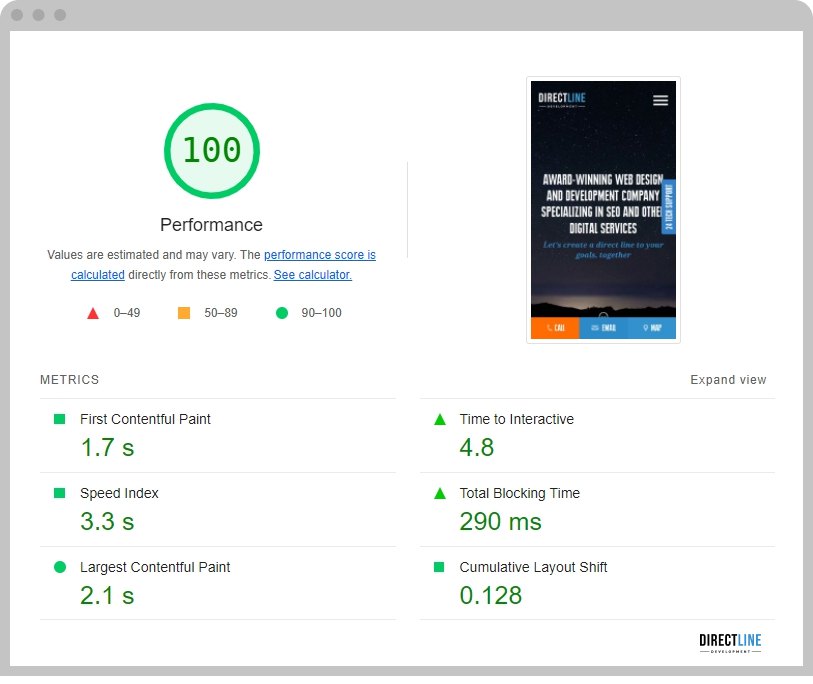
4. Make Sure Your Site is Mobile-Friendly
In the first three months of 2021, 47.07 percent of web traffic in the USA originated from mobile devices. This was an increase from the 45.95 percent recorded in the previous quarter and mobile traffic is only going to continue increasing. Therefore, your e-commerce site SEO audit checklist needs to include a test of your site’s mobile-friendliness. If people can’t comfortably use your site on tablets and smartphones as well as laptops and desktops, they will leave. This means your bounce rate will go up.

However, this isn’t the only issue you’ll encounter. Mobile-friendliness is a ranking factor for Google. In fact, the search engine uses the mobile site first for crawling and indexing. Therefore, if you don’t offer a good experience to mobile users, your site won’t rank as highly. Once again, you can turn to a Google tool to assess how your site is performing. This time, you’ll need to use the Mobile-Friendly Test.
If your e-commerce site isn’t ideal for people using mobile devices, you’ll need to get a responsive site. Responsive web design means that your site will adapt to the device the user has so they can comfortably read content, search for products, and make purchases.
5. Make Sure Your Site is Secure
Security is of the utmost importance for both shoppers and e-commerce website owners. This is the last step on our e-commerce technical SEO audit but it shouldn’t be ignored. When shoppers hand over personal details like their addresses and credit card details, they expect that this information will be handled securely. News of a breach would be very damaging to your company. Security also plays a role in your search engine rankings since Google prefers secure sites. If there are loopholes in your security, you won’t get as much traffic.
To find out if your e-commerce website is secure, type in the URL and check the address bar to see if there’s a lock next to it. Your site’s URL should also say “https” rather than “http”. If your site is properly secured, all you need to do is ensure your Secure Sockets Layer certificate doesn’t expire. On the other hand, if your site isn’t secure, you need to purchase an SSL certificate as soon as possible. This will ensure that shoppers’ financial and personal details are protected. More about the differences between https and http, as well as their advantages and disadvantages, we told in the article What Is The Difference Between HTTP and HTTPS?
6. Set Up The Canonicals
A common feature of all ecommerce websites is that they have the same products existing at multiple URLs. It is caused by listing pages which combine all the categories of products. Ecommerce sites can use sorting options to generate multiple product pages with the same URL but different parameters. It prevents search engines from identifying the main page and increases the chance of appearance of doubled pages.
In this case canonical tags can solve the problem. Right canonical setup is a key to ecommerce sites success. Check your product pages to ensure that:
- Original pages versions have a self-referencing canonical tag, which determines them as the URL to index.
- Every alternate page version has a canonical tag naming the original version of the page.
- The canonical tags point only to indexable URLs.
- Each page has only one canonical tag, to make Google know which of them is correct.

7. Set Up The Pagination
E-commerce involves more than one or two product pages, so it's worth using pagination for the convenience of viewing the entire list of products. This allows you to divide long pages with categories or a list of products into manageable fragments of 100 items per page. Pagination should be not only on the product listing pages, but also on the blog pages of the site. You could have a category page like "yoursite.com/category" that displays the first 100 products, then "yoursite.com/category?page=2" for the next 100 products and so on.
Pagination helps search engines discover and view page-by-page breakdowns from the main category. When doing an e-commerce SEO audit, you need to pay attention to all the pagination problems. You need to remove the index "noindex" or canonical tags from pages with a page breakdown, otherwise search engines will ignore these pages, and therefore some sections of your site will not appear in search.
To make sure that the robots correctly indexed pages on your site, we recommend prescribing in the meta tags Title and Description numbering pages, to prevent duplicate meta-tags. And also prescribe tags index and follow in the robots tag. You then instruct robots that these pages can be indexed ("index" tag) and that they can be followed by other pages in search of content ("follow" tag). An example of writing meta-tags as well as pagination is shown in the picture below:

8. Structured data
For e-commerce sites, it's important to structure data that points search engines to site elements that match a given taxonomy. This approach helps search engines better understand your page content.
Micromarkup is the markup of page elements with special tags and attributes, which helps search engine crawlers understand more clearly the content of the pages of an Internet resource. As a consequence, the content is correctly displayed in search results.
Using the schema markup is the best way to achieve this. For ecommerce sites, the most relevant markups are:
- Product that helps you extract relevant details into a rich Google snippet.
- Breadcrumb, thanks to which you can easily build a hierarchy of pages on the site.
- Review - following on from product markup, review markup like itemReviewed schema can be applied to a variety of entities such as local businesses, products, films and books etc.
- AggregateRating, which shows the average rating based on multiple ratings or reviews.

Ecommerce SEO Audit Checklist in 21 Steps: Let’s Sum It Up
-
On-Page SEO Audit
- Assess How You Use Keywords
- Assess Your Meta Descriptions and Title Tags
- Assess Your Content
- Duplicate content
- Headings
- Alternative text for Images
- Internal linking
-
Off-Page SEO Audit
- Evaluating Backlinks
- Evaluating Your Social Media Profiles
-
Technical SEO Audit
- Check Your Robots.txt and XML Sitemap
- Check Your Website’s Indexability and Crawlability
- Check How Quickly Your Pages Load
- Make Sure Your Site is Mobile-Friendly
- Make Sure Your Site is Secure
- Set Up The Canonicals
- Set Up The Pagination
- Structured data
Why You Also Need An E-commerce SEO Competitor Audit
You shouldn’t stop at auditing your site. You also need to look at what your competitors are doing. The aim isn’t to copy everything they do but to see what they’re doing well and then do it even better (if it’s appropriate for your business). If you don’t keep up with your competitor's SEO practices, you could easily be left behind. However, you don’t want to adopt a content strategy that won’t help your e-commerce operation.
Let’s look at how you can perform an e-commerce SEO competitor audit.
1. Identify the Most Important Keywords and Competitors
You should already know the keywords that you want to rank for as well as who the other players in your industry are. If you believe there are gaps in your knowledge, do the necessary research. If you need to come up with keywords, you can start by brainstorming the broad themes relating to your business and then identifying five to ten keywords related to each theme. You can use Google Keyword Planner to help you.
As far as your competitors go, you should go beyond the obvious businesses. If you are solely an online seller, keep in mind that some of your potential competitors may be companies with brick-and-mortar locations. Similarly, if you operate both physical and online operations, some online-only retailers are likely to be competing with you.
You should also consider businesses of varying sizes if they’re serving a similar demographic. Also, if you sell various categories of products, you may have different competitors in each category. If you choose the wrong sites to compete against, your efforts to improve your rankings won’t work. Identifying the right sites helps to inform the rest of your e-commerce SEO competitor audit.
2. Rank the Sites
What we discussed above is just the start of your e-commerce SEO competitor audit. It may even be the easiest depending on how much work you’ve already done on your keyword strategy. The next step is to analyze how your competitors rank for each keyword.
Tools like Searchmetrics make this easy since you just need to plug in the keywords and the URLs. However, you can also do it manually using a spreadsheet. You can use Google to see how each site ranks. However, use the Google Ads Ad Preview instead of a regular Google search so the ads won’t be personalized for you. List the top ranking sites for each keyword.
3. Analyze the Data
The next stage of the e-commerce SEO competitor audit is to examine the sites that outrank yours. Try to figure out why they’re doing better. Maybe they’ve published more content or better content or their keyword optimization is better. Think back to the factors we encouraged you to consider during your own site audit. Are your competitors’ pages loading faster? Is their mobile experience seamless? Do they have lots of internal links? Try to identify all the things they’re doing right.
4. Devise a Strategy
The whole point of an e-commerce SEO competitor audit is to refine your own marketing strategy. Once you’re clear on why Google favors certain sites, look to see what you can improve on your e-commerce website. You probably won’t be able to do everything that your competitors are doing, at least not immediately. Some things may simply not be relevant. However, there are likely to be some small tasks that you can begin doing right away.
Maybe you can start a blog if and insert some internal links if you haven’t yet done so. Maybe you’ve been ignoring metadata because it seemed like an unnecessary step. Go back through all your content and product pages and add the relevant information. If you need help with some of the larger, more technical aspects, don’t be afraid to seek professional help. The investment will pay off when you start ranking higher in the search engines and attracting more high-quality leads and conversions.
Don’t Delay Starting Your E-commerce SEO Audit!
Every company’s website is important but if you have an e-commerce site, it’s even more crucial that you have everything in order. An e-commerce site SEO audit will allow you to take stock of where you currently stand so you can make improvements as needed. By following the above recommendations for on-site, off-site, and technical SEO, you’ll know exactly what to look for. Analyzing your competitors’ websites can also help you to improve your search engine rankings.
If the idea of doing everything we've described seems like too much, there’s no need to be ashamed. Not every business owner has the time or resources to get their website up to scratch. If that’s the case and you’d rather have someone else carry out a comprehensive e-commerce SEO audit, reach out to Direct Line Development. We have a team of experts who can analyze your site and give you ideas as to how you can improve it. We can even develop a site that is more in keeping with your requirements if necessary. Contact us today to get started!








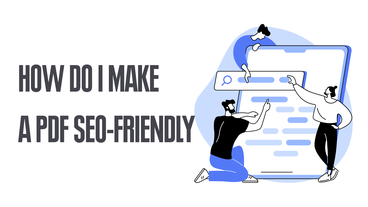

Comments